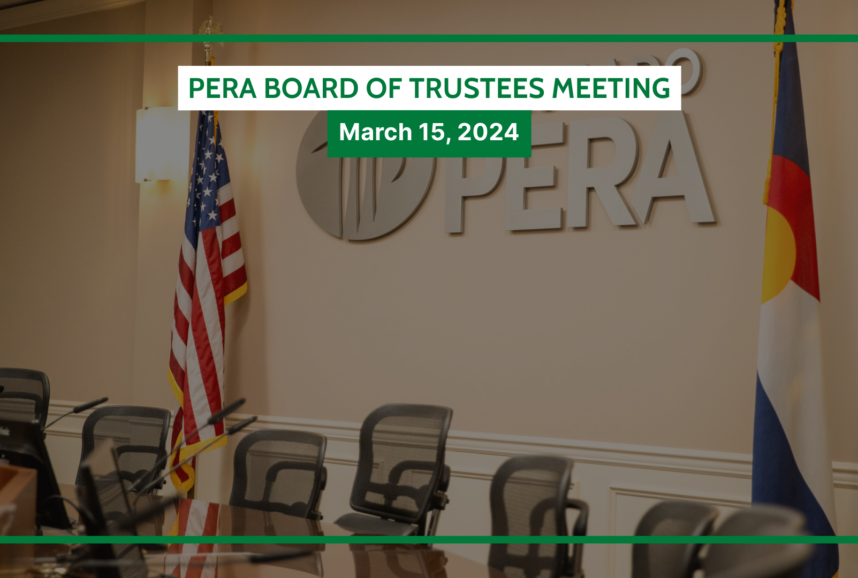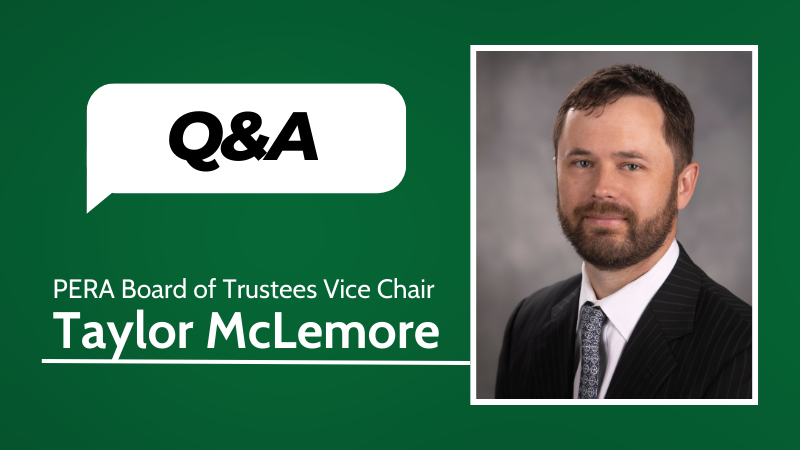The Public Sector HealthCare Roundtable
Today, health care has become a critical topic and more than ever, it is important for purchasers of health care to have a strong voice in that national conversation. The Colorado Public Employees’ Retirement Association (PERA) began providing access to health care for pre-Medicare and Medicare-eligible retirees and benefit recipients in 1986. The program, now known as PERACare, currently provides coverage to over 86,000 individuals through a number of medical, dental and vision insurers and also offers health care coverage to active employees of participating PERA-affiliated employers.
As a large, public-sector health care purchaser in Colorado, it is essential for PERA and similar organizations to have a voice in the national health care discussion. The Public Sector HealthCare Roundtable, was formed in 2005 as a coalition of public-sector health care purchasers and provides these purchasers an avenue through which to inform and influence national health care policy.
The Roundtable is governed by a Board of Directors elected by its membership. In addition to PERA, members of the Roundtable include some of the largest public pension funds around the nation, such as the California Public Employees’ Retirement System (CalPERS), the Ohio Public Employees Retirement System (Ohio PERS), and the Employees Retirement System of Texas (Texas ERS). Other member organizations that represent the interests of public-sector employees and retirees include Aetna, Aon, CVS/Caremark, Express Scripts, and Humana. The Roundtable holds an annual conference in Washington, D.C., providing a forum for its members and other health care industry leaders to discuss current issues in health care affecting public-sector employers and employees.
Goals of the Roundtable’s are to accomplish the following:
- Educate policymakers about the unique characteristics of public health care purchasers
- Influence national debate for improved health care quality and cost reduction
- Reduce unsustainable health care cost trends
- Reduce costs for individual participants
- Share knowledge and expertise to make health care more efficient and cost-effective
- Speak effectively as a collective voice for public sector health care purchasers
The Roundtable’s Call to Action asks state and local governmental entities responsible for public employee and retiree health programs “to become active participants in the national debate over reform of the long-term structure of the nation’s system of healthcare by (1) quantifying the nature and extent of their healthcare services; (2) developing specific current and projected cost estimates associated with them; (3) describing successful strategies that have been developed and implemented with regard to best practices and cost containment in the public sector; (4) identifying issues unique to purchasers/administrators of public employee and retiree healthcare; and (5) ensuring that all elected officials at every level of government are provided with this information and an explanation of its implications for increased access to healthcare, improved quality of care, managed and equitably distributed costs, and simplified administration and delivery of services.”
Thomas Lussier, administrator of the Roundtable states, “Today, it’s more important than ever for public sector purchasers to work together to advance public policies that improve quality and preserve the sustainability of public employee health benefits.”
Organizations such as the Roundtable are of vital importance to PERA and provide a way to participate in the national and state health care discussions and develop strategies to deliver the best care possible to members and retirees.
As an example, an important strategic initiative for PERA is helping the membership to better understand the costs in health care. The current payment model in health care can result in significant discrepancies in the actual cost of a procedure. According to a recent study by the Blue Cross Blue Shield Foundation, the cost for a total knee replacement surgery varies between $11,000 and $69,000 across the country. PERA has seen a similar scenario in Colorado, with the cost of hip or knee replacement procedures varying by up to $40,000.
In an effort to control costs and offer savings to the PERA membership, PERA recently launched the PERACare Select program, which provides access to high quality knee or hip replacement procedures with fixed prices to members in an Anthem pre-Medicare plan through PERACare. The PERACare Select program sets fixed prices for surgery and medical services related to hip and knee replacement procedures – from intake to discharge – and greatly reduces, eliminating in some instances, any cost-share for participants.
As a member of the Public Sector HealthCare Roundtable, PERA can share lessons learned in developing the PERACare Select program and support other public-sector health care purchasers, which may be implementing similar innovative programs.
As part of PERA’s mission to serve the membership in the best way possible, PERA continues to develop innovative strategies, be an active participant in legislative issues, and work with other industry leaders to provide quality and value to members and retirees through funding, investment, health care, and other areas.




